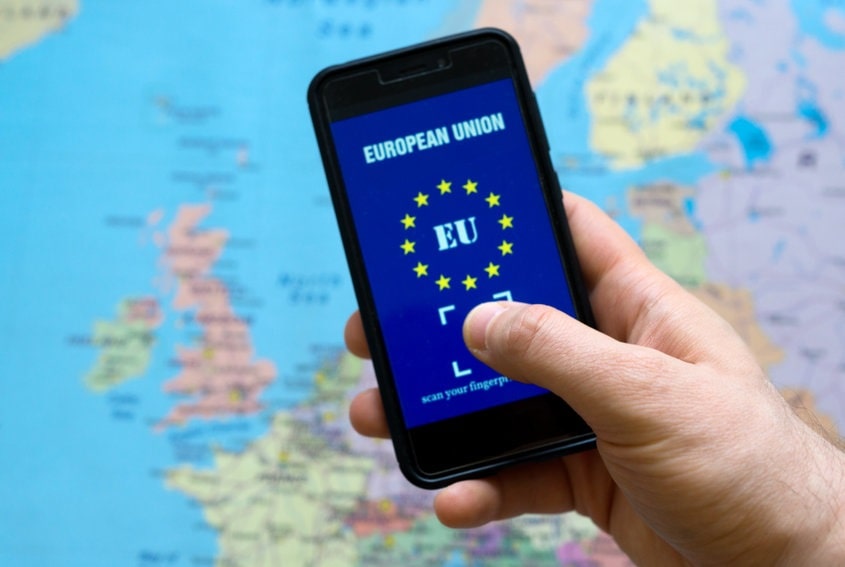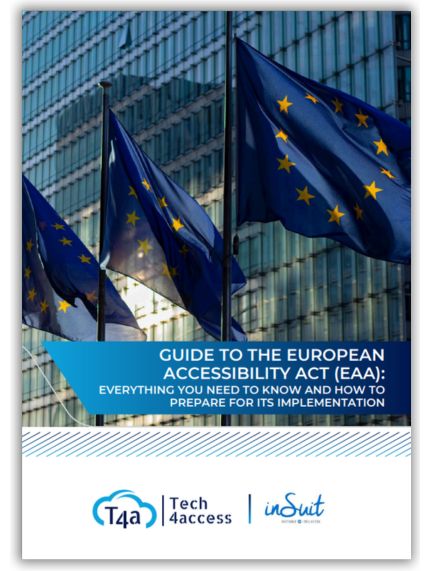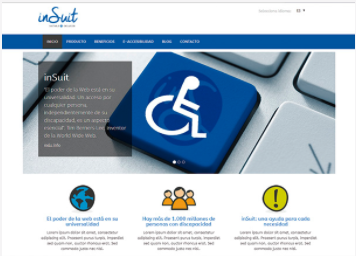

Directive 2019/882, known as the European Accessibility Act, will become mandatory as of June 28, 2025. From that date, products and services within its scope must meet the established accessibility requirements.
In Spain, this directive has been transposed through Law 11/2023 of May 8; in Italy via Legislative Decree No. 82 of May 27, 2022; and in France through Law No. 2023-171 of March 9, 2023. These regulations aim to ensure accessibility and inclusion in products and services across the EU.
This reinforces the European Union’s commitment to a more inclusive society, promoting autonomy and participation for people with disabilities.
What does Directive 2019/882 imply?
Since its publication on June 7, 2019, in the Official Journal of the European Union, member states have been working to adapt their national legislations, a process that had to be completed by June 28, 2022.
This has given companies time to prepare before the regulation comes into force. The directive will apply to new products and services from mid-2025, and to those already on the market—provided they undergo no substantial changes—until a final deadline of June 28, 2030.
Key sectors that must comply with these requirements include:
- E-commerce (websites and mobile applications).
- Banking and insurance sector.
- Transportation sector.
- E-books and their reading platforms.
- Audiovisual sector.
- Office documents and multimedia content, except those published before the directive takes effect.
Why is the European Accessibility Act necessary?
The European Accessibility Act or Directive 2019/882 complements Directive 2016/2102 but
broadens its scope by including a wider range of private-sector products and services.
While Directive 2016/2102 focuses primarily on the public sector, the new regulation seeks to ensure more universal access, promoting equal opportunities for all EU citizens.
If you’d like to review the specific requirements set by this directive, we invite you to consult Annex I, where you’ll find comprehensive details.
The future of accessibility starts now, and June 28, 2025, will mark a turning point in how we conceive of accessible products and services for everyone.

Differences between Directive 2019/882 and Directive 2016/2102
The key difference lies in that Directive 2019/882 goes beyond accessibility compliance for services such as websites, mobile apps, and digital documents.
It also addresses accessibility compliance for market products such as mobile phones, tablets, operating systems, computers, ATMs, payment terminals, e-book readers, etc.
In contrast, Directive 2016/2102 focuses only on the accessibility of public administration websites and mobile applications.
Directive 2019/882 allows any company marketing products and services within the European Union—excluding microenterprises—to have an impact.
The regulation acknowledges that some microenterprises could face a disproportionate burden in complying with these requirements. Therefore, such businesses may be exempt.
A microenterprise is defined as one with fewer than 10 employees and an annual turnover or balance sheet not exceeding 2 million euros.
When does the European Accessibility Act take effect?
First, it’s important to understand that this directive does not apply directly from the EU to the member states.
Instead, a deadline was set for countries to transpose it into their national legislation—just as Spain did with Law 11/2023 of May 8, and as Italy and France did with Legislative Decree 82/2022 and Law 2023-171, respectively.
These national transpositions are what impose the relevant obligations on the authorities designated by each member state for monitoring and enforcing the law, thereby granting fundamental rights to users.

Deadlines for adaptation to Directive 2019/882
It is crucial to pay attention to the deadlines set by Directive 2019/882, as the aim is to ensure optimal compliance with accessibility requirements at both the EU and national levels.
Here is a breakdown of key information:
On transposition
As mentioned earlier, Directive 2019/882 has been transposed in:
- Spain through Law 11/2023 of May 8.
- Italy through Legislative Decree No. 82 of May 27, 2022.
- France through Law No. 2023-171 of March 9, 2023.
Application to new products and services
- Applies to products and services (within the directive’s scope) placed on the market after June 28, 2025.
- Each country may choose to require accessibility requirements for emergency communications from June 28, 2027, as an exception to the above deadline.
Products and services placed on the market before June 28, 2025
- Services using products introduced before June 28, 2025, may continue to be provided until substantial changes are made, with a final deadline of June 28, 2030.
- Service contracts agreed before June 28, 2025, may continue without modification until they expire, provided this does not exceed June 28, 2030.
- All self-service terminals already in use before June 28, 2025, may remain active until the end of their useful life but may not exceed 20 years of operation.
Time is running out: prepare for the EAA before June 2025
The European Accessibility Act comes into force on June 28, 2025, and all companies must comply with its digital accessibility requirements. Our guide will help you understand the regulation and implement the necessary changes to avoid penalties.
More and more laws and directives are being approved that mandate accessibility compliance. If you haven’t already, now is the time to embrace accessibility—contact us!
Our team of accessibility experts is at your service to offer a solution that brings you closer to compliance while creating social impact and greater reach for your organization or company.

